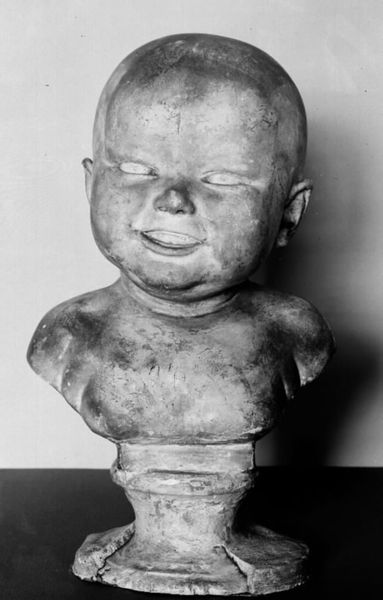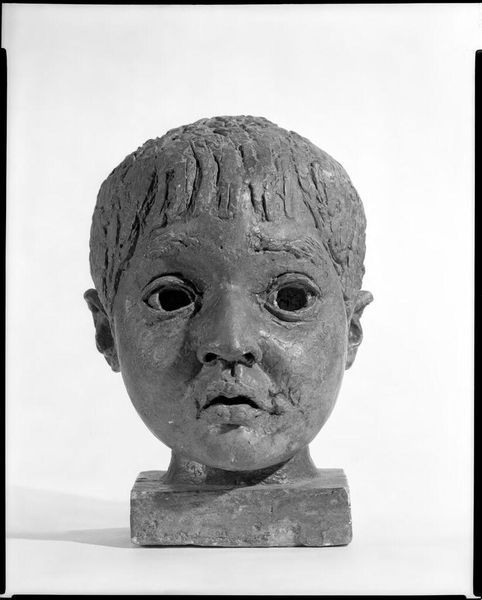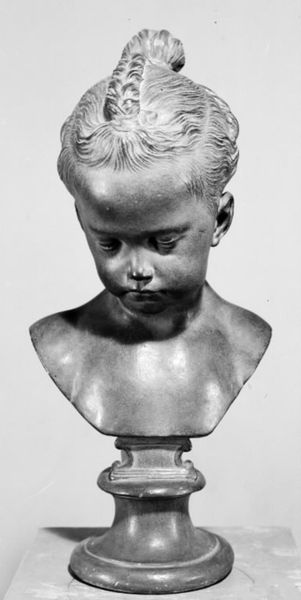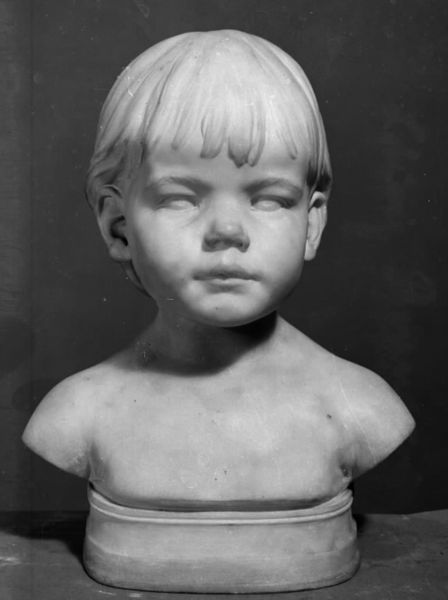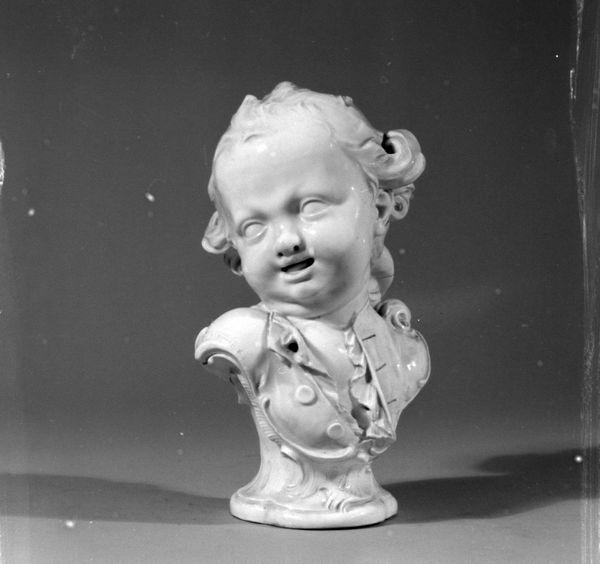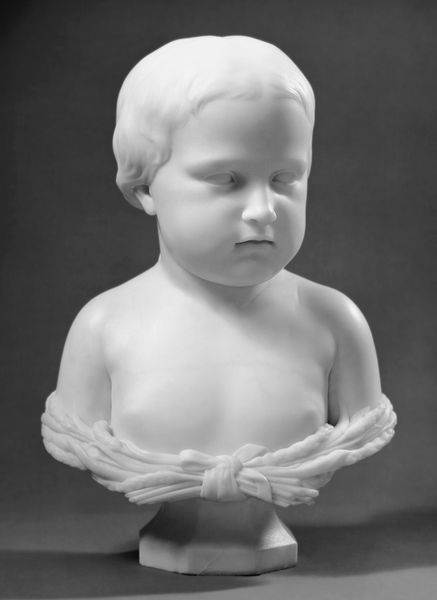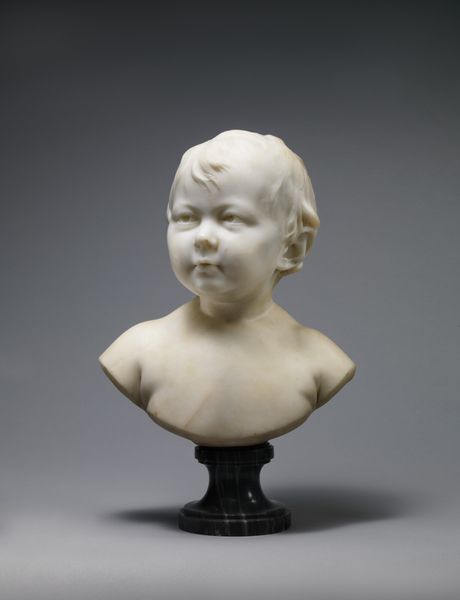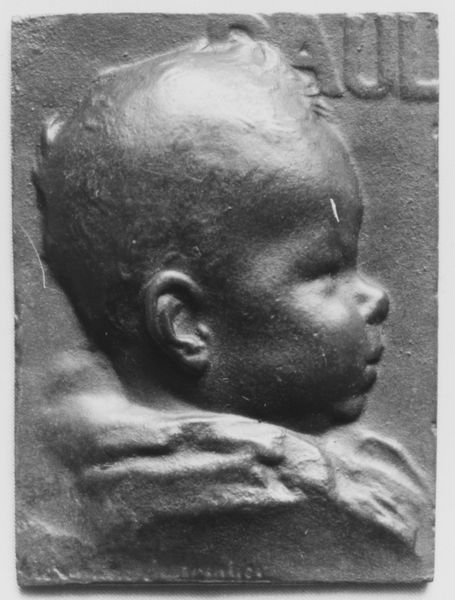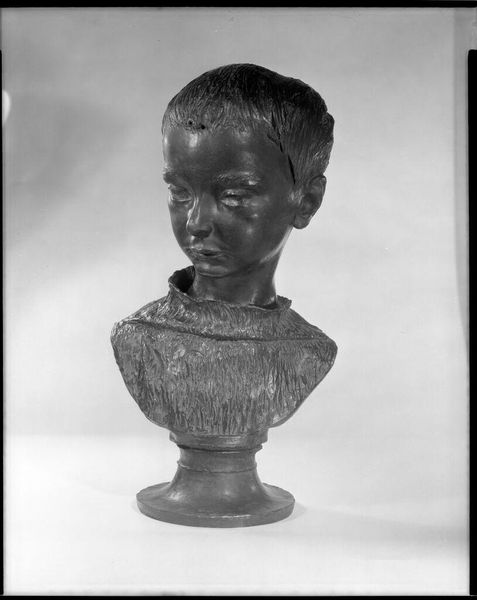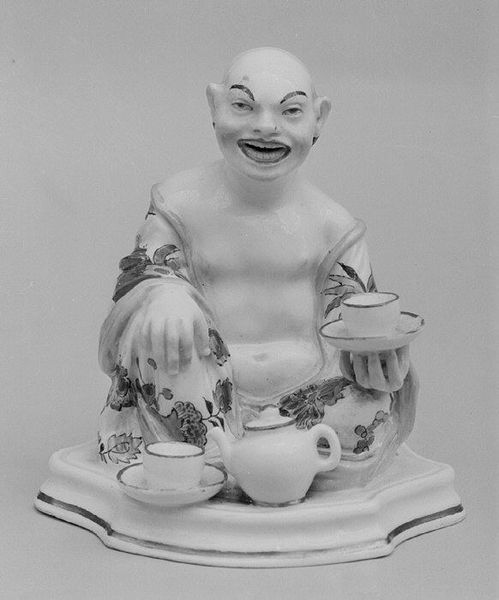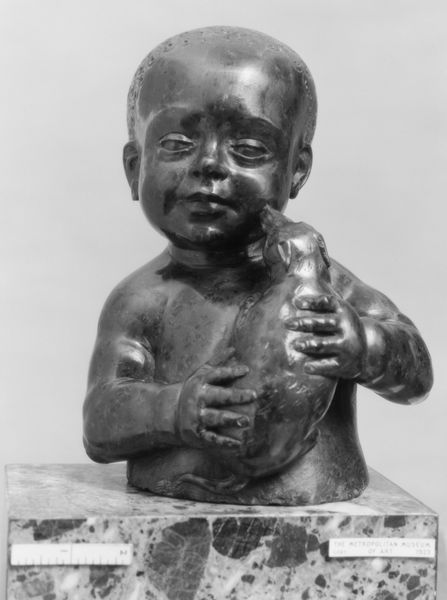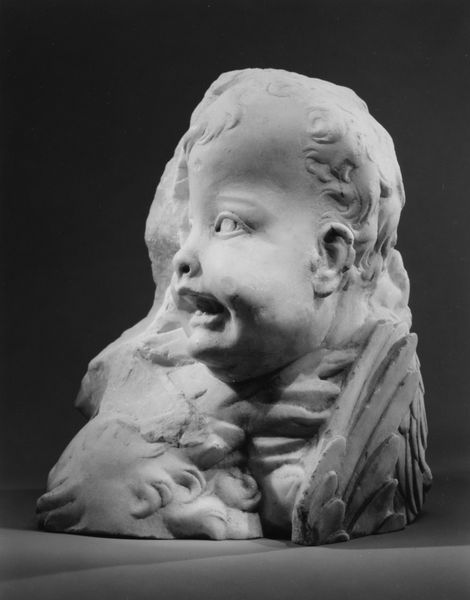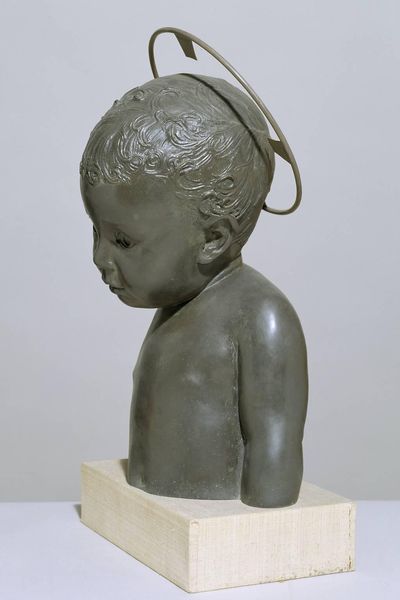
ceramic, porcelain, sculpture
#
portrait
#
medieval
#
baroque
#
portrait
#
ceramic
#
porcelain
#
figuration
#
child
#
sculpture
#
decorative-art
Dimensions: 5 3/4 × 5 1/2 in. (14.6 × 14 cm)
Copyright: Public Domain
Curator: This intriguing artwork is called "Child," crafted by the Meissen Manufactory between 1710 and 1720. The piece is porcelain sculpture, a striking example of early 18th-century craftsmanship. Editor: The first thing that strikes me is the unsettling nature of this bust. The almost hyper-realistic details of the baby's face coupled with the stark, unglazed ceramic gives it an uncanny valley effect, almost macabre. Curator: It's interesting you say that. During the Baroque era, such representations of children were often linked with concepts of mortality and the transient nature of life, “memento mori.” Wealthy families frequently commissioned such pieces, sometimes for funerary monuments. Editor: So it becomes a way to memorialize, and to assert status. The very material, porcelain, a costly luxury, becomes part of that language, doesn’t it? How did these kinds of objects circulate at the time, and who did they influence? Curator: Indeed. Porcelain's rarity and the technical skill required for its creation speaks to that wealth. And porcelain Meissen figurines were collected avidly. Their circulation contributed to shifting perceptions about class, taste and the relationship of domestic objects to dynastic power across Europe. Editor: I wonder about the political subtexts implied. We often see children positioned to convey legacies, entitlements. It's never simply a sentimental object. Curator: Precisely. Images of children, even in portrait busts, are often highly coded with socio-political messages. They act as symbols of dynastic continuation, and the anxieties surrounding inheritance are very apparent if you look closely at, say, the choice of details, clothing or expression. The way that these artworks perform these subtle negotiations of power can tell us so much. Editor: That pushes us to consider how childhood itself has been constructed in relation to political power throughout history. Curator: Absolutely. And the ongoing dialogue between art history and contemporary theory can provide a really robust perspective on the role these figures had in both reflecting and shaping society. Editor: So much for a simple child's portrait, then! It reveals just how complex even seemingly innocent representations can be. Curator: A potent reminder that even a porcelain figure is embedded within vast social structures and political forces.
Comments
No comments
Be the first to comment and join the conversation on the ultimate creative platform.
